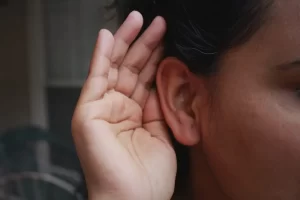
Have you become accustomed to repeating the phrase, “What did you say?” or, “Can you repeat that?” If you notice that you are struggling to hear sounds that you’ve never struggled to hear before, it may be time to head to the audiologist to get your hearing checked. There are seven different types of hearing tests your audiologist can execute in order to determine the level of hearing loss you may be experiencing.
Speech Testing
Speech testing measures the softest speech you can understand at least 50% of the time. This measurement, also known as your speech reception threshold (SRT), allows audiologists to determine how well you can separate a direct conversation from background noise. This test can be administered in either a quiet or noisy room.
Otoacoustic Emissions
Also known as OAEs, otoacoustic emissions are the sounds produced by the vibrations of the hair cells in the cochlea. A tiny probe with a microphone and speaker stimulates the cochlea, then measures the response. Emissions will be produced if people have normal hearing, but if they don’t, there will be no sound. This test can also determine if there is ear canal blockage. Newborns often receive this test as part of their first hearing screening.
Pure Tone Testing
This test is also referred to as pure tone audiometry, and air conduction measures how well you can hear sounds at different volumes and pitches.
Bone Conduction Testing
During this test, a conductor is placed behind your ear and tiny vibrations are sent through the bone to the inner ear. This measures how your inner ear responds to sound.
Tympanometry
When an audiologist does a tympanometry test, they will measure how your eardrum responds to air pressure. This will determine whether or not there is a buildup or obstruction in the ear canals. There may be a buildup of wax or fluid, or there may be a tumor obstruction or eardrum tear.
Acoustic Reflex Testing
Acoustic Reflex Testing helps your audiologist figure out where the hearing issues reside within the ear, such as the cochlea, ossicles, or auditory nerve. Involuntary muscle contractions in the middle ear measure this.
If you want to know more about these tests, contact us.